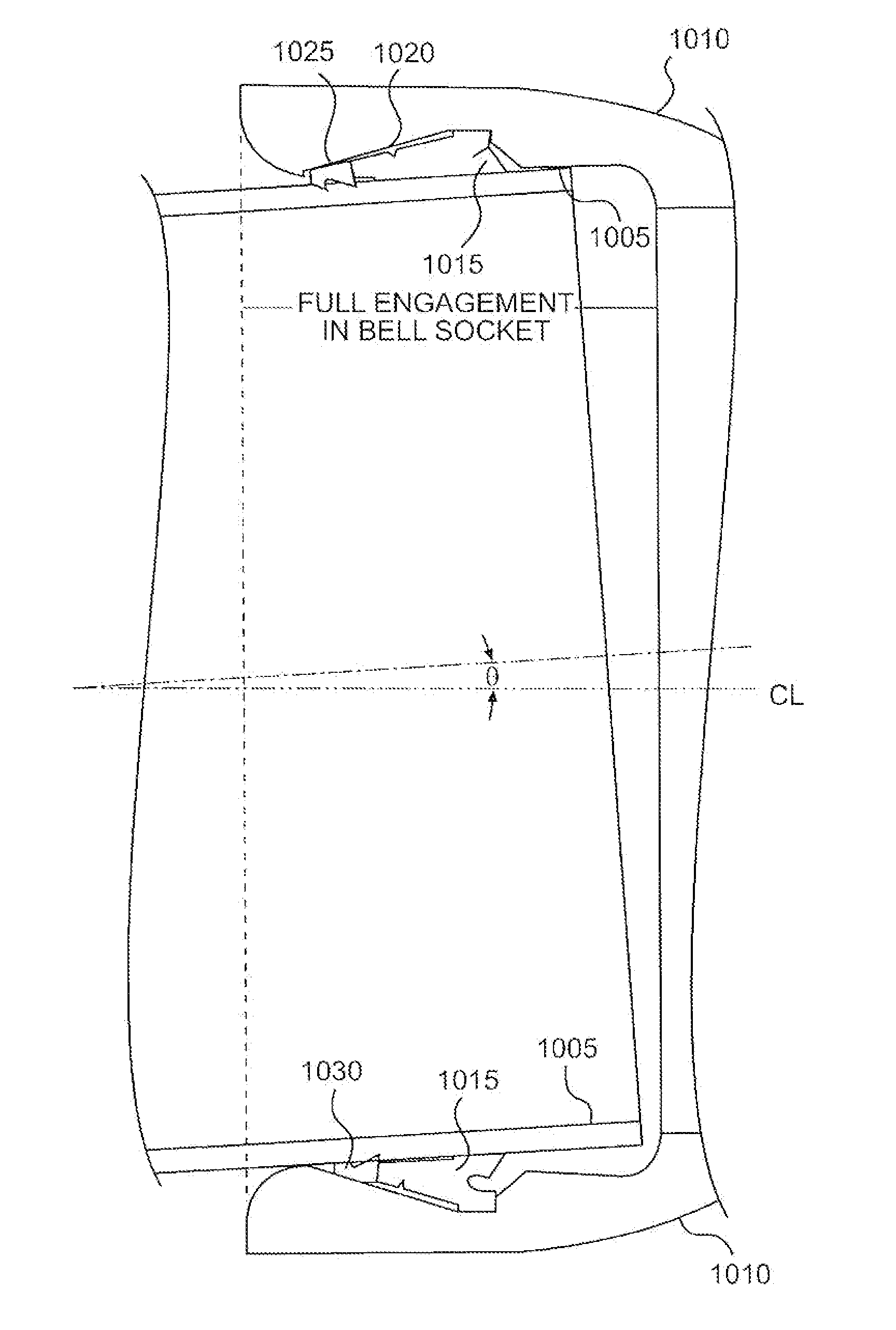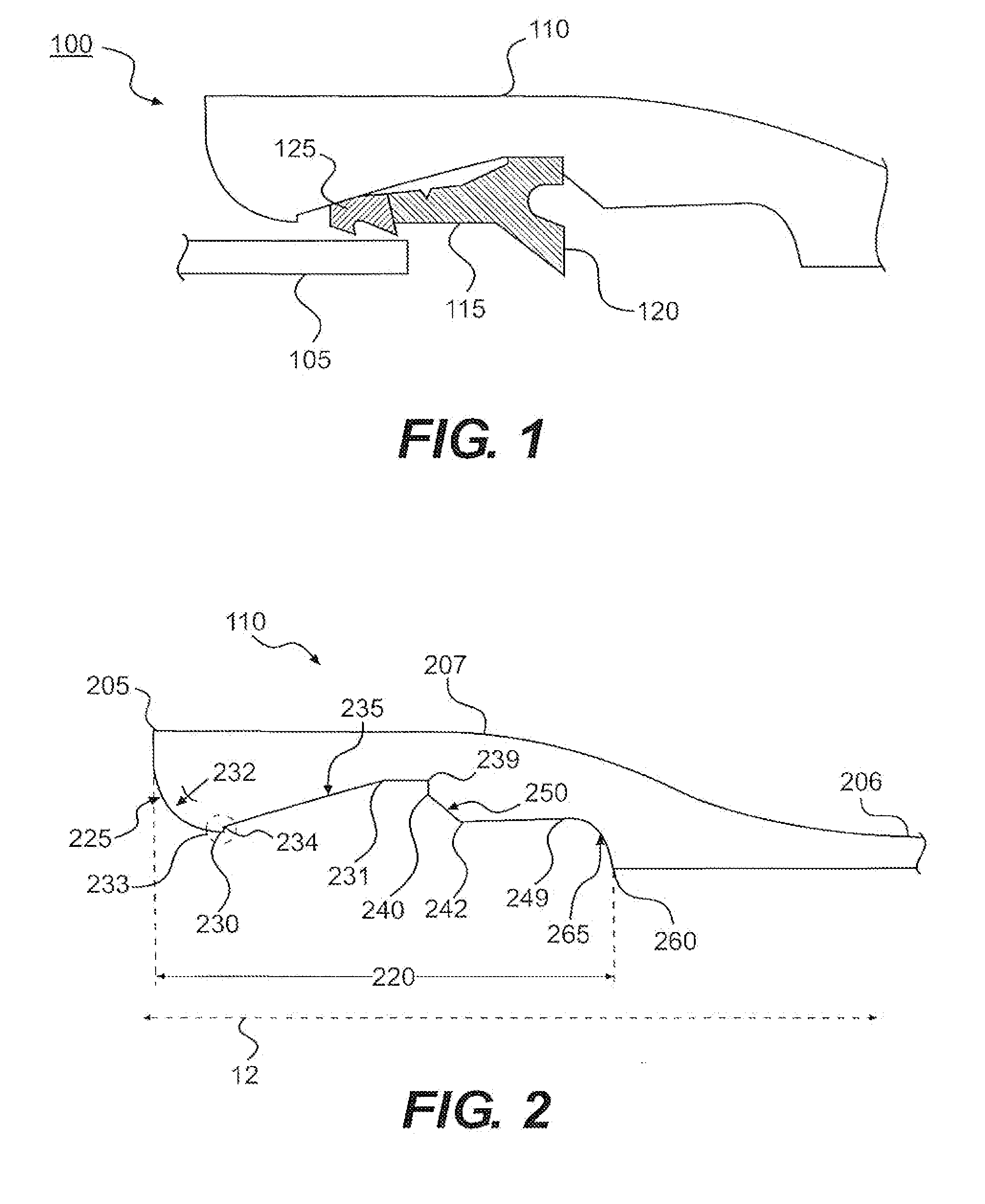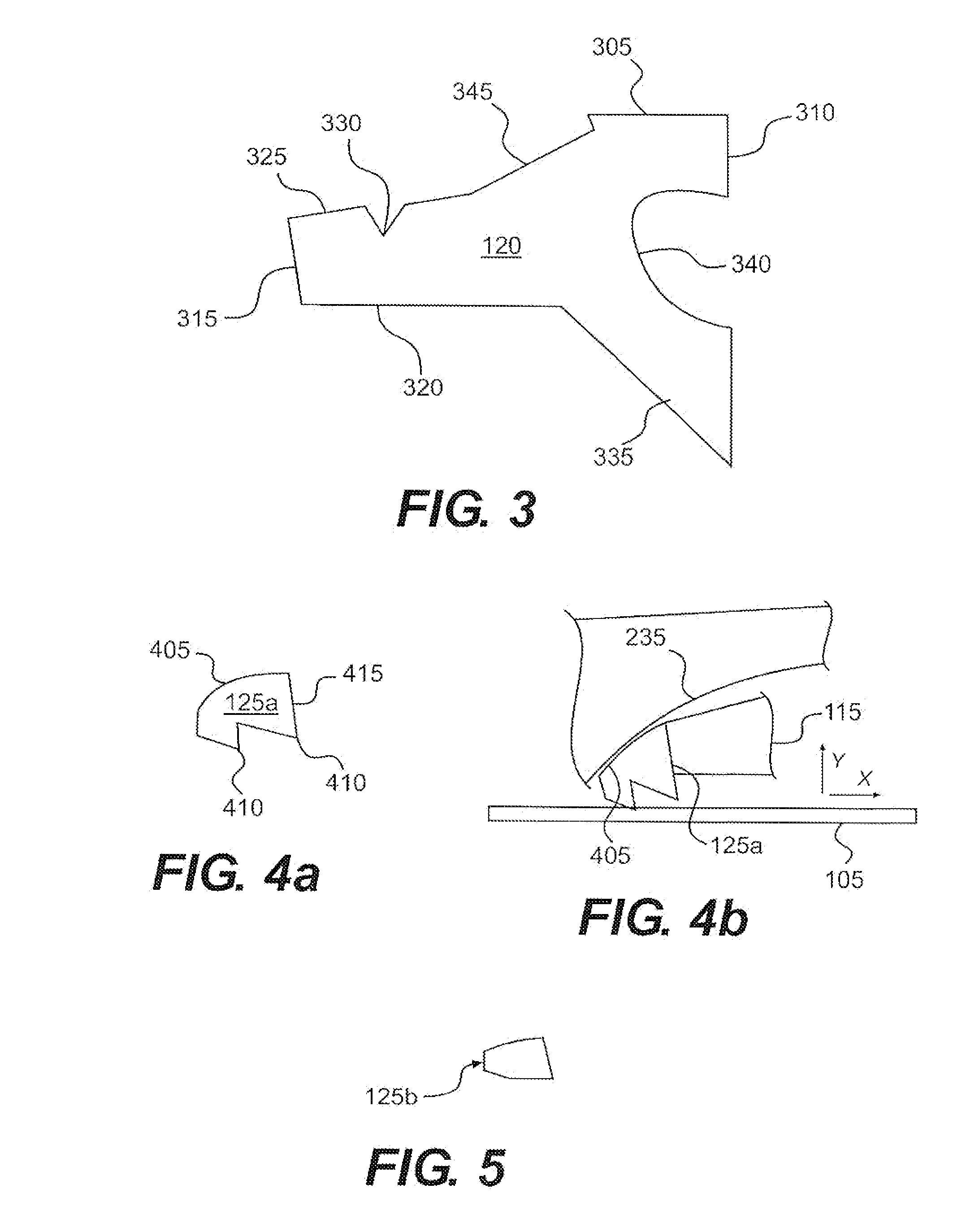Simplified low insertion force sealing device capable of self restraint and joint deflection
a low insertion force, self-restraint technology, applied in the direction of couplings, cable terminations, transportation and packaging, etc., can solve the problems of bending or deflecting joints, flanged joint systems are costly to install and require considerable maintenance, and the acceptance of fittings, valves, hydrants, etc., to achieve a small increase in insertion force
- Summary
- Abstract
- Description
- Claims
- Application Information
AI Technical Summary
Benefits of technology
Problems solved by technology
Method used
Image
Examples
example
[0073]An experiment using two lengths of 8 inch pipe was conducted. One pipe had a bell as described herein while the other had a spigot as described herein. The two lengths were joined using a sealing device as described herein. The pipes were sealed at their respective open ends and the internal cavity was pressurized. The experiment was conducted first with the pipes having no deflection and then with the pipes having 5.7° and 7.0° of deflection. The results are compiled in Table 1.
TABLE 1No. ofJointMinimumMaximumTestSeg-Deflec-Pressure,Pressure,Numbermentstion, °psipsiTest Result180700772Leak: Gasket Tear280700771Leak: Gasket Tear31407001192Leak: Gasket Tear4100700998.5Leak: Gasket Tear5105.7700828.2Leak: Gasket Tear 6*1407001067.3No failure 7*147.07001028.6Leak from priordamage to gasket*Same gasket was used for Tests 6 and 7. Gasket sustained damage in removal after Test 6.
[0074]If “θ” is defined as the angle of deflection between the axis of the bell socket and the spigot, th...
PUM
| Property | Measurement | Unit |
|---|---|---|
| diameter | aaaaa | aaaaa |
| diameter | aaaaa | aaaaa |
| thickness | aaaaa | aaaaa |
Abstract
Description
Claims
Application Information
 Login to View More
Login to View More - R&D
- Intellectual Property
- Life Sciences
- Materials
- Tech Scout
- Unparalleled Data Quality
- Higher Quality Content
- 60% Fewer Hallucinations
Browse by: Latest US Patents, China's latest patents, Technical Efficacy Thesaurus, Application Domain, Technology Topic, Popular Technical Reports.
© 2025 PatSnap. All rights reserved.Legal|Privacy policy|Modern Slavery Act Transparency Statement|Sitemap|About US| Contact US: help@patsnap.com



